SURYANAMSKAR
Surya Namaskar or Sun Salutation is a sequence of 12 powerful yoga poses. Besides being a great cardiovascular workout, Surya Namaskar is also known to have an immensely positive impact on the body and mind.
Surya Namaskar is best done early morning on an empty stomach. Each round of Sun Salutation consists of two sets, and each set is composed of 12 yoga poses. You might find several versions on how to practice Sun Salutation. However, it is advisable to stick to one particular version and practice it regularly for best results.
Besides good health, Surya Namaskar also provides an opportunity to express gratitude to the sun for sustaining life on this planet.
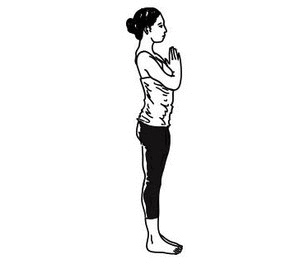
Exercise 1: For next 10 days, do 12 rounds of sun salutation, followed by other yoga poses, and then relax with a round of Yoga Nidra (a relaxing guided meditation by Gurudev Sri Sri Ravi Shankar). You will be amazed to find that this simple mantra will help you stay fit, happy, and peaceful throughout the day.
Incredible benefits of Surya Namaskar:
- Helps maintain cardiovascular health
- Stimulates the nervous system
- Helps in stretching, flexing and toning the muscles
- An excellent exercise for weight loss management
- Strengthens the immune system
- Enhances cognitive functions
- Improves overall health, strengthens the body and relaxes the mind
Step 1. Pranamasana (Prayer pose)
Stand at the edge of your mat, keep your feet together and balance your weight equally on both the feet. Expand your chest and relax your shoulders. As you breathe in, lift both arms up from the sides, and as you exhale, bring your palms together in front of the chest in prayer position.
Step 2. Hastauttanasana (Raised arms pose)
Breathing in, lift the arms up and back, keeping the biceps close to the ears. In this pose, the effort is to stretch the whole body up from the heels to the tips of the fingers.
Tip to deepen this yoga stretch:
You may push the pelvis forward a little bit. Ensure you're reaching up with the fingers rather than trying to bend backward.
You may push the pelvis forward a little bit. Ensure you're reaching up with the fingers rather than trying to bend backward.
Step 3. Hastapadasana (Standing forward bend)
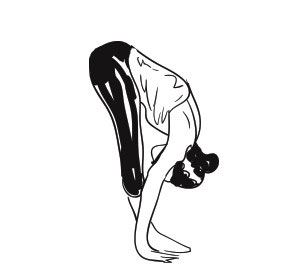
Breathing out, bend forward from the waist keeping the spine erect. As you exhale completely, bring the hands down to the floor beside the feet.
Tip to deepen this yoga stretch:
You may bend the knees, if necessary, to bring the palms down to the floor. Now make a gentle effort to straighten the knees. It's a good idea to keep the hands fixed in this position and not move them henceforth until we finish the sequence.
You may bend the knees, if necessary, to bring the palms down to the floor. Now make a gentle effort to straighten the knees. It's a good idea to keep the hands fixed in this position and not move them henceforth until we finish the sequence.
Step 4. Ashwa Sanchalanasana (Equestrian pose)
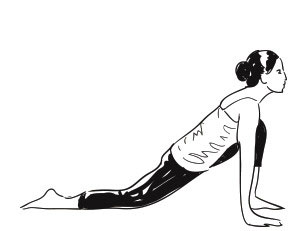
Breathing in, push your right leg back, as far back as possible. Bring the right knee to the floor and look up.
Tip: How to deepen this yoga stretch?
Ensure that the left foot is exactly in between the palms.
Ensure that the left foot is exactly in between the palms.
Step 5. Dandasana (Stick pose)
As you breathe in, take the left leg back and bring the whole body in a straight line.
Tip to deepen this yoga stretch:
Keep your arms perpendicular to the floor.
Keep your arms perpendicular to the floor.
Step 6. Ashtanga Namaskara (Salute with eight parts or points)
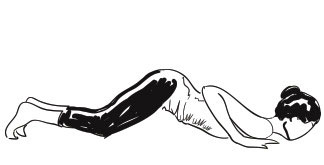
Gently bring your knees down to the floor and exhale. Take the hips back slightly, slide forward, rest your chest and chin on the floor. Raise your posterior a little bit. The two hands, two feet, two knees, chest and chin (eight parts of the body) should touch the floor.
Step 7. Bhujangasana (Cobra pose)
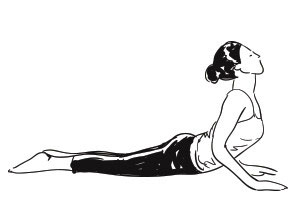
Slide forward and raise the chest up into the Cobra pose. You may keep your elbows bent in this pose with the shoulders away from the ears. Look up at the ceiling.
Tip to deepen this yoga stretch:
As you inhale, make a gentle effort to push the chest forward; as you exhale, make a gentle effort to push the navel down. Tuck the toes under. Ensure you're stretching just as much as you can and not forcing your body.
As you inhale, make a gentle effort to push the chest forward; as you exhale, make a gentle effort to push the navel down. Tuck the toes under. Ensure you're stretching just as much as you can and not forcing your body.
Step 8. Adho Mukha Svanasana (Downward facing dog pose)
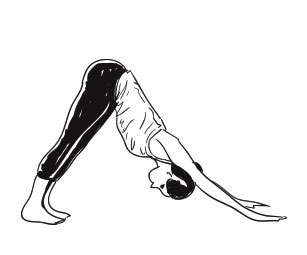
Breathing out, lift the hips and the tailbone up to bring the body into an inverted ‘V’ pose.
Tip to deepen this yoga stretch:
If possible, try and keep the heels on the ground and make a gentle effort to lift the tailbone up, going deeper into the stretch.
If possible, try and keep the heels on the ground and make a gentle effort to lift the tailbone up, going deeper into the stretch.
Step 9. Ashwa Sanchalanasana (Equestrian pose)
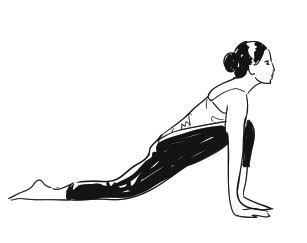
Breathing in, bring the right foot forward in between the two hands. The left knee goes down on the floor. Press the hips down and lookup.
Tip to deepen this yoga stretch:
Place the right foot exactly between the two hands and the right calf perpendicular to the floor. In this position, make a gentle effort to push the hips down towards the floor, to deepen the stretch.
Place the right foot exactly between the two hands and the right calf perpendicular to the floor. In this position, make a gentle effort to push the hips down towards the floor, to deepen the stretch.
Step 10. Hastapadasana (Standing forward bend)
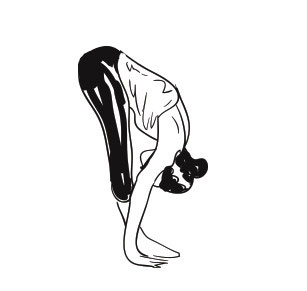
Breathing out, bring the left foot forward. Keep the palms on the floor. You may bend the knees, if necessary.
Tip to deepen this yoga stretch:
Gently straighten the knees, and if you can, try and touch your nose to the knees. Keep breathing.
Gently straighten the knees, and if you can, try and touch your nose to the knees. Keep breathing.
Step 11. Hastauttanasana (Raised arms pose)
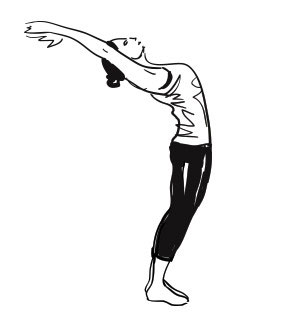
Breathing in, roll the spine up. Raise the hands up and bend backward a little bit, pushing the hips slightly outward.
Tip to deepen this yoga stretch:
Ensure that your biceps are beside your ears. The idea is to stretch up more rather than stretching backward.
Ensure that your biceps are beside your ears. The idea is to stretch up more rather than stretching backward.
Step 12. Tadasana (Mountain Pose)
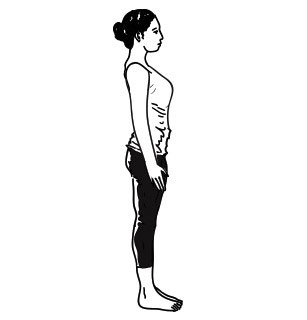
As you exhale, first straighten the body, then bring the arms down. Relax in this position and observe the sensations in your body.
This completes one set of Surya Namaskar. Complete the round by repeating the steps. Only this time, start with taking the left foot behind in step number 4 and bringing the right foot forward in step number 10. Once done, you would’ve completed one round of Surya Namaskar.
You might also like to read 11 tips for better Sun Salutation practice or learn the Sun Salutation mantras.
Surya Namaskar (Sanskrit: सूर्यनमस्कार IAST: Sūrya Namaskār), Salute to the Sun or Sun Salutation, is a practice in yoga as exercise incorporating a sequence of some twelve gracefully linked asanas.[2][3] The asana sequence originated in the Hatha Yoga tradition on 9th century in India. The basic sequence involves moving from a standing position into Downward and Upward Dog poses and then back to the standing position, but many variations are possible. The set of 12 asanas is dedicated to the vedic-hindu solar deity Surya. In some Indian traditions, the positions are each associated with a different mantra.
Variant sequences called Chandra Namaskar (Moon Salutation) have also been created.
Etymology and origins[edit]
The name Surya Namaskar is from the Sanskrit सूर्य Sūrya, "Sun" and नमस्कार Namaskār, "Greeting" or "Salute".[6] Surya is the Hindu god of the sun.[7] This identifies the Sun as the soul and source of all life.[8] Chandra Namaskar is similarly from Sanskrit चन्द्र Chandra, "Moon".[9]
The origins of Surya Namaskar are vague; Indian tradition connects the 17th century saint Samarth Ramdass with Surya Namaskar exercises, without defining what movements were involved.[10] In the 1920s, Bhawanrao Shriniwasrao Pant Pratinidhi, the Rajah of Aundh, popularized and named the practice, describing it in his 1928 book The Ten-Point Way to Health: Surya Namaskars.[4][5][11][12] It has been asserted that Pant Pratinidhi invented it,[13] but Pant stated that it was already a commonplace Marathi tradition.[14]
Ancient but simpler Sun salutations such as Aditya Hridayam, described in the "Yuddha Kaanda" Canto 107 of the Ramayana,[15][16][17] are not related to the modern sequence.[18] The anthropologist Joseph Alter states that Surya Namaskar was not recorded in any Haṭha yoga text before the 19th century.[19] At that time, Surya Namaskar was not considered to be yoga, and its postures were not considered asanas; the pioneer of yoga as exercise Yogendra wrote criticising the "indiscriminate" mixing of sun salutation with yoga as the "ill-informed" were doing.[5]
The yoga scholar-practitioner Norman Sjoman suggested that Krishnamacharya, "the father of modern yoga",[20][21] used the traditional and "very old"[22] Indian wrestlers' exercises called dands (Sanskrit: दण्ड daṇḍ, a staff), described in the 1896 Vyayama Dipika,[23] as the basis for the sequence and for his transitioning vinyasas.[22] Different dands closely resemble the Surya Namaskar asanas Tadasana, Padahastasana, Caturanga Dandasana, and Bhujangasana.[22] Krishnamacharya was aware of Surya Namaskar, since regular classes were held in the hall adjacent to his Yogasala in the Rajah of Mysore's palace.[24] His students K. Pattabhi Jois,[25] who created modern day Ashtanga Vinyasa Yoga,[26] and B. K. S. Iyengar, who created Iyengar Yoga, both learnt Surya Namaskar and flowing vinyasa movements between asanas from Krishnamacharya and used them in their styles of yoga.[24]
The historian of modern yoga Elliott Goldberg writes that Vishnudevananda's 1960 book Complete Illustrated Book of Yoga "proclaimed in print" a "new utilitarian conception of Surya Namaskar"[27][28] which his guru Sivananda had originally promoted as a health cure through sunlight. Goldberg notes that Vishnudevananda modelled the positions of Surya Namaskar for photographs in the book, and that he recognised the sequence "for what it mainly is: not treatment for a host of diseases but fitness exercise."[27]
Description[edit]
Surya Namaskar[29] is a sequence of around twelve yoga asanas connected by jumping or stretching movements, varying somewhat between schools. In Iyengar Yoga, the basic sequence of asanas is Tadasana, Urdhva Hastasana, Uttanasana, Uttanasana with head up, Adho Mukha Svanasana, Urdhva Mukha Svanasana, Chaturanga Dandasana, and then reversing the sequence to return to Tadasana; other poses can be inserted into the sequence.[6]
In Ashtanga Vinyasa Yoga, there are two Surya Namaskar sequences, types A and B.[30] The type A sequence of asanas is Pranamasana, Urdhva Hastasana, Uttanasana, Phalakasana (high plank), Chaturanga Dandasana, Urdhva Mukha Svanasana, Adho Mukha Svanasana, Uttanasana and back to Pranamasana.[30] The type B sequence of asanas (differences marked in italics) is Pranamasana, Utkatasana, Uttanasana, Ardha Uttanasana, Phalakasana, Chaturanga Dandasana, Urdhva Mukha Svanasana, Adho Mukha Svanasana, Virabhadrasana I, repeat from Phalakasana onwards with Virabhadrasana I on the other side, then repeat Phalakasana through to Adho Mukha Svanasana (a third time), Ardha Uttanasana, Uttanasana, Utkatasana, and back to Pranamasana.[30]
A typical[b] Surya Namaskar cycle is:
 1: Pranamasana |  2: Hasta Uttanasana |  3. Uttanasana | ||
 12: Back to 1 |  4. Anjaneyasana | |||
 11. Hasta Uttanasana |  5. Adho Mukha Svanasana | |||
 10. Uttanasana |  6. Ashtanga Namaskara | |||
 9. Anjaneyasana, opposite foot |  8. Adho Mukha Svanasana |  7.Urdhva Mukha Shvanasana |
Mantras[edit]
In some yoga traditions, each step of the sequence is associated with a mantra. In traditions including Sivananda Yoga, the steps are linked with twelve names of the God Surya, the sun:[31]
| Step (Asana) | Mantra (name of Surya)[31] | Translation[31] |
|---|---|---|
| Tadasana | ॐ मित्राय नमः Om Mitrāya Namaḥ | affectionate to all |
| Urdhva Hastasana | ॐ रवये नमः Om Ravaye Namaḥ | cause of all changes |
| Padahastasana | ॐ सूर्याय नमः Om Sūryāya Namaḥ | who induces all activity |
| Ashwa Sanchalanasana | ॐ भानवे नमः Om Bhānave Namaḥ | who diffuses light |
| Parvatasana | ॐ खगाय नमः Om Khagāya Namaḥ | who moves in the sky |
| Ashtanga Namaskara | ॐ पूष्णे नमः Om Pūṣṇe Namaḥ | who nourishes all |
| Bhujangasana | ॐ हिरण्यगर्भाय नमः Om Hiraṇya Garbhāya Namaḥ | who contains everything |
| Parvatasana | ॐ मरीचये नमः Om Marīcaye Namaḥ | who possesses raga |
| Ashwa Sanchalanasana | ॐ आदित्याय नमःOm Ādityāya Namaḥ | God of Gods |
| Padahastasana | ॐ सवित्रे नमः Om Savitre Namaḥ | who produces everything |
| Urdhva Hastasana | ॐ अर्काय नमः Om Arkāya Namaḥ | fit to be worshipped |
| Tadasana | ॐ भास्कराय नमः Om Bhāskarāya Namaḥ | cause of lustre |
Indian tradition associates the steps with Bījā ("seed" sound) mantras and with five chakras (focal points of the subtle body).[32][33]
| Step (Asana) | Bījā mantra[33][32][c] | Chakra[33] | Breathing |
|---|---|---|---|
| Tadasana | ॐ ह्रां Om Hrāṁ | Anahata (heart) | exhale |
| Urdhva Hastasana | ॐ ह्रीं Om Hrīṁ | Vishuddhi (throat) | inhale |
| Padahastasana | ॐ ह्रूं Om Hrūṁ | Swadhisthana (sacrum) | exhale |
| Ashwa Sanchalanasana | ॐ ह्रैं Om Hraiṁ | Ajna (third eye) | inhale |
| Parvatasana | ॐ ह्रौं Om Hrauṁ | Vishuddhi (throat) | exhale |
| Ashtanga Namaskara | ॐ ह्रः Om Hraḥ | Manipura (solar plexus) | suspend |
| Bhujangasana | ॐ ह्रां Om Hrāṁ | Swadhisthana (sacrum) | inhale |
| Parvatasana | ॐ ह्रीं Om Hrīṁ | Vishuddhi (throat) | exhale |
| Ashwa Sanchalanasana | ॐ ह्रूं Om Hrūṁ | Ajna (third eye) | inhale |
| Padahastasana | ॐ ह्रैं Om Hraiṁ | Swadhisthana (sacrum) | exhale |
| Urdhva Hastasana | ॐ ह्रौं Om Hrauṁ | Vishuddhi (throat) | inhale |
| Tadasana | ॐ ह्रः Om Hraḥ | Anahata (heart) | exhale |
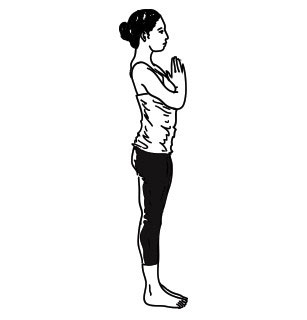
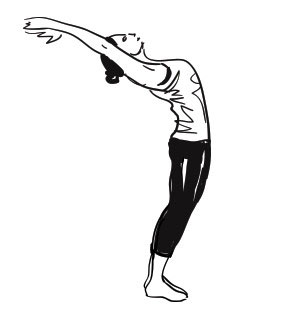
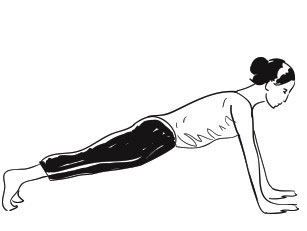
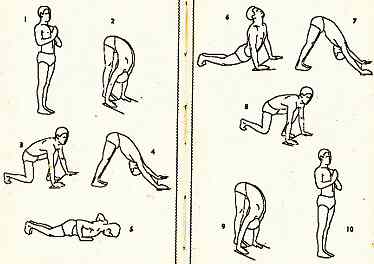

Comments
Post a Comment
Feel Free and open to share your thoughts